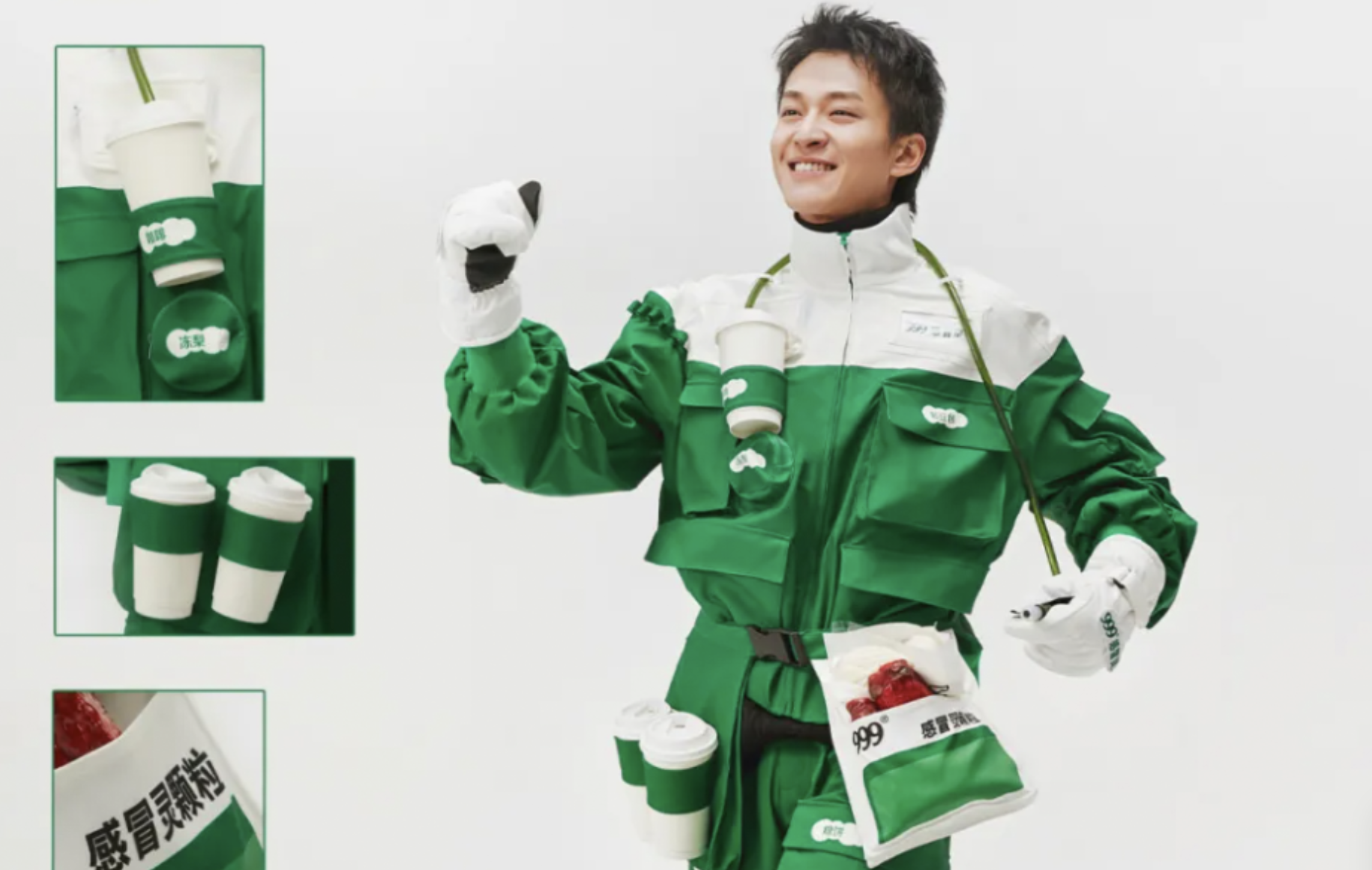Cutting through the noise in 2025: building brand equity beyond AI in China

Happy New Year! We hope 2025 is off to a great start for you. One of the defining trends this year is the continued evolution of AI's impact on marketing – a maturing of last year’s big theme. We anticipate that by the end of this year, AI will play a role in producing over 90% of advertisements.
While AI is making marketing easier on the surface, it is making marketing more challenging overall by raising the bar for success around the world. In a crowded digital landscape, particularly in a market as competitive and digitally-centric as China, standing out will demand smarter, more holistic initiatives.
The Double-Edged Sword of AI in Marketing
AI is revolutionising marketing by enabling faster, more efficient, and cost-effective communication – whether targeting the masses or niche groups. By democratising content creation, AI has lowered barriers for small brands and individual creators to produce high-quality materials that rival major players.
However, this democratisation isn’t without a cost: oversaturation. As content feeds become inundated with AI-generated material, much of it risks becoming homogenous and losing authenticity. Brands will need to elevate their game to truly engage and resonate with their target audience.
From Transactions to Long-Term Connections
In an era of commoditised content, the emphasis on building brand equity beyond short-term transactions has never been greater. To succeed, brands must focus on emotional connections with consumers – something AI can enhance but cannot fully replicate.
While AI outputs are improving, they often lack the x-factor that comes from the human touch (although a lot of human-created marketing falls short too!). For example, despite AI’s scalability and reliability, virtual bots haven’t replaced human livestreamers because they can’t yet match the authenticity and emotional resonance audiences expect.
Conversely, for operational tasks like customer care, where creativity and differentiation are less critical, AI-powered bots have become widespread and highly effective.
Old-School Meets New-School
Ironically, in an AI-driven world, old-fashioned touch points like physical stores are emerging as powerful tools to differentiate brands and foster human connections. Taobao design brands, traditionally focused online, are increasingly opening brick-and-mortar stores. These spaces help them stand out, reach new customers, and address growing challenges around growing acquisition costs and return rates.
Beyond the Obvious AI Applications
The most visible applications of AI in marketing – like content generation – are just the tip of the iceberg. Some of the most effective, yet less glamorous, uses of AI are behind the scenes. These include enhancing manufacturing processes, streamlining delivery, and enabling near-real-time personalisation. Such operational improvements not only boost efficiency but also create richer, end-to-end customer experiences that are much harder to commoditise.
The Road Ahead
This year, brands would be wise to think beyond the obvious when planning AI strategies. Success will come from integrating AI in thoughtful, innovative ways that cut through the noise and build lasting connections with consumers.
If you’re ready to take your AI strategy to the next level, China Skinny is here to help. Wishing you a successful and impactful year ahead!
A concise yet holistic summary of March 2025’s key marketing developments in China, highlighting valuable insights and their implications for brands.
Instead of chasing scale through aggressive franchising or racing to the bottom with price wars, Honeymoon and Ah-Ma Handmade are playing the long game: building brands rooted in culture, craftsmanship, and emotional connection
Robots are coming to China and will likely be the next big addition to the marketing mix
Longchamp grew 20% last year while other luxury brands struggled. It did so by building its brand around its products, and by building immersive, seasonal experiences
POPMART's Labubu's popup in London's Harrod's is symbolic of increasingly global Chinese brands, and the plenty of lessons that come from them
This could quite possibly be our favourite marketing campaign in China yet, transitioning a cough medicine brand into a fashion powerhouse, incorporating user generated content, community and corporate welfare
China’s technological acceleration has come as a shock to many, particularly DeepSeek, however the country’s centrally planned economy, long-term planning and wealth of resources means it is increasingly well-positioned to make breakthroughs. All the more so when cornered by economic pressure such as semiconductor restrictions which contributed to the rise of DeepSeek.
Jack Ma launched New Retail with a roar in 2016 starting a scramble for the New Retail crown on both sides of the Pacific. The buzzword has since fizzled out and Alibaba has divested in much of its bricks & mortar retail properties, but the need to rethink retail is more important than ever. Here's why...
Why DeepSeek’s new app may alter the path of geopolitics and economies globally, and play a big part in marketing in China
A concise yet holistic summary of January 2025’s key marketing developments in China, highlighting valuable insights and their implications for brands.
Conversations are likely to be a little different for many young Chinese returning home for their Chinese New Year holiday
A Harper’s Bazaar campaign featuring hotpot CEOs is a testament to the power of blending fashion, culture, and business leadership. It not only redefines the role of CEOs in branding but also highlights broader trends in cultural revival, emotional connection, and experiential marketing.
AI has become an integrated tool for marketing in China 2025, making marketing easier at a surface level, but harder than it has ever been before. How do brands utilise AI to stand out?
Highlights of a study proposing solutions for the evolving landscape of China's consumer market amidst economic uncertainties and shifting consumer behaviours.
A concise summary of last month's key marketing developments in China, highlighting valuable insights and their implications for brands.
A softening ad spend market in China reveals some changes in priorities across online platforms and shifts in spending from major categories
MINISO has launched MINISO LAND, attracting massive crowds. Its first global “IP theme park-style” flagship blends globally- known IPs into an immersive shopping experience.
China's seniors are one of the most anticipated demographics, yet one of the least tapped by foreign brands. Preferences, behaviour and influences are all changing, helping to make them more accessible for foreign brands
Following the robotic dogs, CASIO's latest innovation, the AI pet Moflin, is broadening horizons of what these pets can be. Beyond AI pet healthcare and smart supplies, AI is spawning exciting product placement opportunities related to pets.
Jellycat CAFÉ has taken Shanghai by storm with its limited-time pop-up. Exclusive plush toys and immersive packaging performances highlight Jellycat's unique blend of emotional value and playful creativity.
With the advancement of AI, many industries have successfully reduced costs and increased efficiency, and the food & beverage sector has seen the emergence of many innovative and data-driven products. However, are AI-developed foods really as good as we imagine yet?
The drivers for being part of a community are more pronounced in China. This is seeing brands connecting consumers with a shared interest in engaging ways online and offline through events and partnerships, to build emotional connections so to reply less on price-based competition
Founded in 2019, Tiaohai Village (跳海酒馆) is a community-driven pub brand. Despite having around 30 locations nationwide, it's said to have achieved over ¥100 million ($14m) in revenue in 2023, together with over 200 highly active online alcohol communities. Check it out to learn about what sets Tiaohai apart from other pubs and how it truly connects with Chinese young people emotionally.
As Chinese Valentine's Day, Qixi Festival (七夕节) conveys Chinese-style unique romance between lovers and couples. Check it out to see how brands are embracing this traditional festival in creative ways.
China has an estimated 330 million female gamers, accounting for nearly half of the gaming population. This year, the commercial potential of Otome games—romance simulation games designed for female players—has become evident. Many brands, from food to beauty, have started collaborations with Otome games.
Chongqing pipped Guangzhou as China's forth biggest city economy. The megacity presents significant opportunities, but it requires marketing localised for the for the city's unique consumers and environment
Despite the Paris Olympics getting mixed reviews in China so far, the opportunities for brands to align with sports to connect with consumers is large, and growing
The opening ceremony of the Paris Olympics, along with other parts of the Games, hasn’t been without controversy, but Chinese brands like Yili, HEYTEA and Kuaishou have capitalized on the interest of the spectacle to launch impressive marketing campaigns.
Thai milk tea has successfully carved out a niche in China’s ever-evolving milk tea market. Despite its high sugar and milk content, how does it manage to stand out in an increasingly health-conscious market? Read on to find out more…
Have you watched the hit TV series The Tale of Rose that premiered this June? High-quality TV series like these offer a fantastic opportunity for brands to achieve their marketing goals in China. Check it out to see how they help brands make an impact.





























